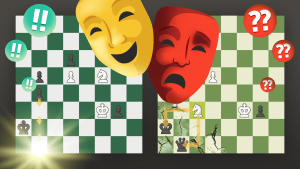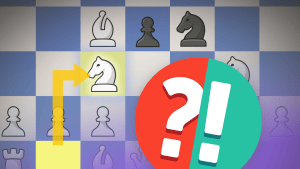
Read your Opponent's Mind!
Let me start with a disclaimer: I cannot read other people's minds. It would be extremely helpful in many different activities but especially so when you play chess. The good news is, sometimes you don't even need to guess your opponent's thoughts since his moves are just screaming them and all you need to do is just to listen to them and pick up the valuable information. I just hope that you use your mind reading skills better than the guy in this classic movie.
A very good example of acting upon your opponnent's thoughts is the next game:
Black's last move 9...e6 clearly indicates his intention to play d6-d5 (the immediate 9...d5? was losing a pawn due to 10. g5!). For example, after 10.0-0-0 d5! 11. g5 Nh5 12 exd5 Nxd4 13 Bxd4 Bxd4 14 Qxd4 Qxg5+ Black recovers the pawn because the g5-pawn was hanging. Dolmatov says that his first intention was to play 10. h4 in order to protect the g5 pawn, but then the Black Nh5 gets an opportunity to jump to the g3 square which is not covered by the h2 pawn anymore. Therefore, he came to the conclusion that the best way to protect the g5 pawn is the move 10. Rg1! This is one of those famous 'mysterious rook moves' when a Rook moves to a closed file to do some important strategic task. In the game White got a huge positional advantage but then didn't play energetically enough and allowed his opponent to escape with a draw:
My own best 'mysterious rook move' has an interesting story. I was playing in what was going to become the last Soviet Union Championship and in one of the rounds I was intrigued by the game played right next to me:
Of course it was difficult to believe that the great Mikhail Tal just blundered like that, so after the tournament was over I looked at this interesting position.
It turns out that White already cannot avoid losing a pawn, besides it is not that easy to protect the e4 pawn since 8.Bd3? loses a lot of material due to 8...Qxc3+. It was really strange: White developed all his pieces and got a fantastic center, meanwhile Black developed his Queen early (which is not something you want to do in the opening), traded his fianchettoed Bishop and suddenly it was White who was in trouble. It took a lot of time before the correct answer for Black's unusual strategy was found. And surprisingly, it was very simple: if Black wants to take the Nc3 and open the 'b' file, why not put a Rook on the b1 square even before Black takes on c3? This way my Rook won't be hanging after potential Qxc3 and also in some cases his b7 pawn can be hanging as well. A couple of years later I got an opportunity to try this idea:
Three years later I had another chance to use my idea:
As you could see, in both games my weird looking move 6.Rb1 discouraged Black from playing Bxc3 and essentially made the Qa5 move useless.
Try to predict the moves and ideas of your opponents and then prevent or at least discourage your adversary from playing them. Believe me, besides an obvious positive impact on your game the correct reading of other people's minds makes you feel like a magician!

